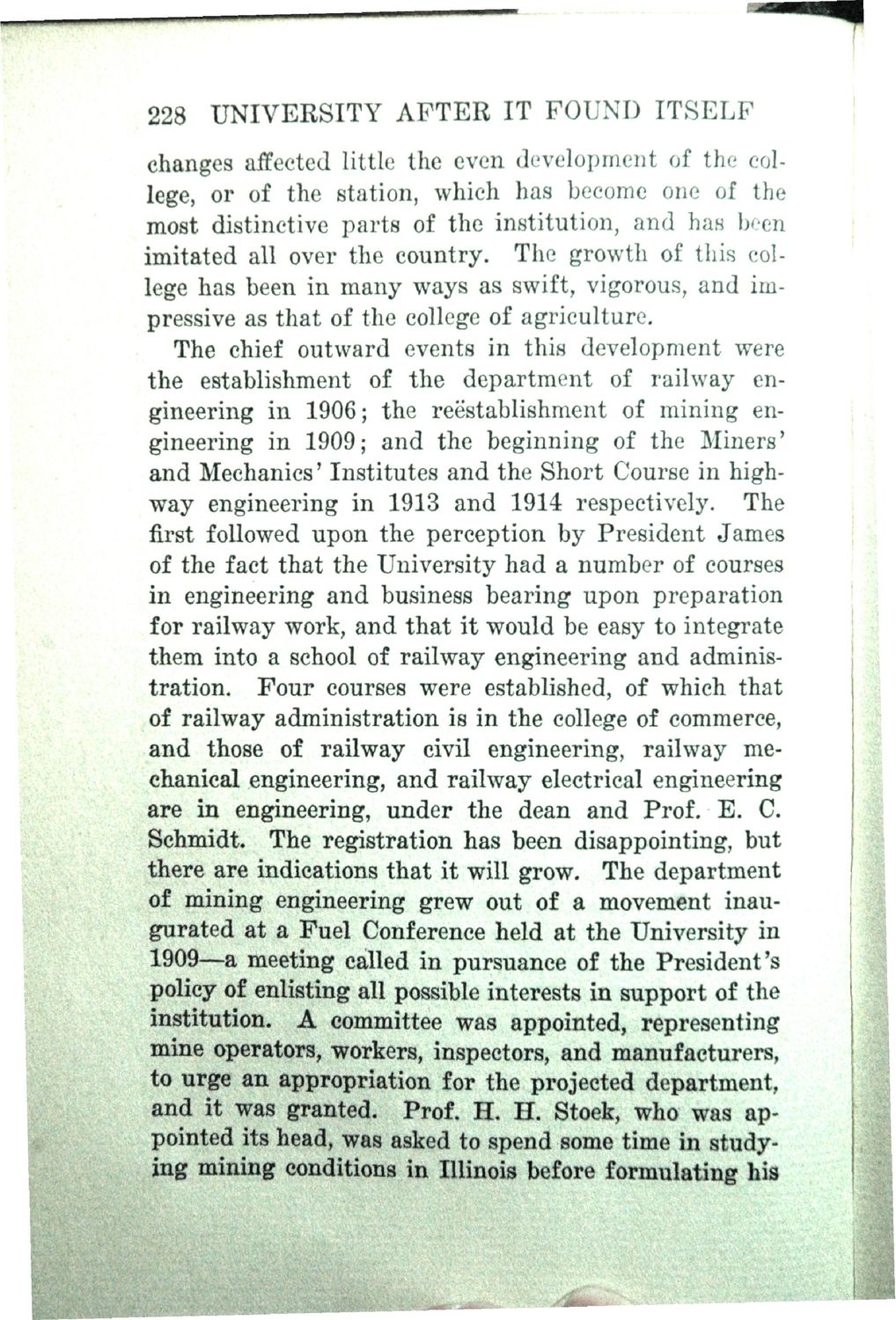| |
| |
Caption: Book - History of the University (Nevins)
This is a reduced-resolution page image for fast online browsing.

EXTRACTED TEXT FROM PAGE:
228 UNIVERSITY AFTER IT FOUND ITSELF changes affected little the even development of the college, or of the station, which has become one of the most distinctive parts of the institution, and has been imitated all over the country. The growth of this college has been in many ways as swift, vigorous, and impressive as that of the college of agriculture. The chief outward events in this development were the establishment of the department of railway engineering in 1906; the ^establishment of mining engineering in 1909; and the beginning of the Miners' and Mechanics' Institutes and the Short Course in highway engineering in 1913 and 1914 respectively. The first followed upon the perception by President James of the fact that the University had a number of courses in engineering and business bearing upon preparation for railway work, and that it would be easy to integrate them into a school of railway engineering and administration. Four courses were established, of which that of railway administration is in the college of commerce, and those of railway civil engineering, railway mechanical engineering, and railway electrical engineering are in engineering, under the dean and Prof. E. C. Schmidt. The registration has been disappointing, but there are indications that it will grow. The department of mining engineering grew out of a movement inaugurated at a Fuel Conference held at the University in 1909—a meeting called in pursuance of the President's policy of enlisting all possible interests in support of the institution. A committee was appointed, representing mine operators, workers, inspectors, and manufacturers, to urge an appropriation for the projected department, and it was granted. Prof. H. H. Stoek, who was appointed its head, was asked to spend some time in studying mining conditions in Illinois before formulating his
| |